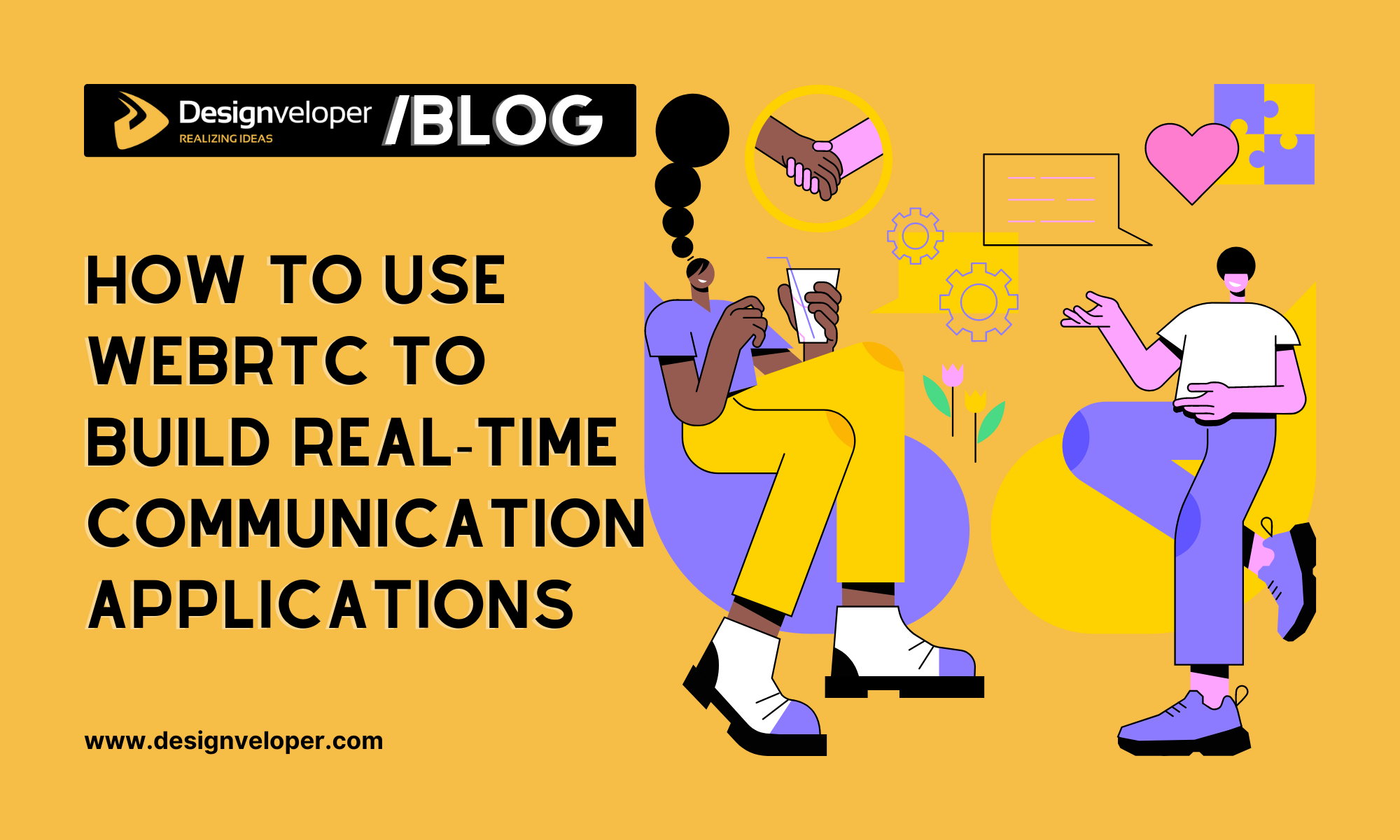


WebRTC and VOIP are the technologies that are revolutionizing real-time communication. WebRTC, or Web Real-Time Communication, is a technology that allows direct audio and video communication inside web browsers. This technology also does not require third-party plugins. On the other hand, VOIP or Voice over Internet Protocol transmits voice in the form of digital data packets over the internet.
Recent statistics show that the use of such technologies is on the increase. WebRTC is stated to support various platforms and guarantee the security of the channels by CloudTalk. Also, the use of VOIP has greatly reduced communication expenses for the business organizations.
Real-life examples are used to explain the use of WebRTC and VOIP in real life. For example, the SIPSorcery library enables programmers to incorporate real-time communication functions too. NET applications. Another example is the use of WebRTC with SIP to develop video conferencing applications as a single application.
These technologies are not only cheap but also have the ability of expanding their services as the demand increases. They offer organizations flexibility and efficiency in their means of communication. Through WebRTC and VOIP, the communication system of a company can be developed and the efficiency of the organization can be increased.
WebRTC and VOIP are the new technologies that are rapidly changing the face of real time communication. WebRTC is an acronym that stands for Web Real-Time Communication and it allows for real time audio and video communications within web browsers. This technology does not require the use of third-party plugins or the use of any other software. It employs secure communication channels and is compatible with a number of platforms.
VOIP stands for Voice over Internet Protocol and it involves converting of voice into data packets. These packets are sent over the internet, thus eliminating the use of the normal telephone lines. VOIP is cheap and can be expanded as per the needs of the business.

The integration of WebRTC with VOIP improves flexibility and simplifies the business processes of communication. This integration enables businesses to engage in chatting with customers or other teams without the need to install special applications. For instance, organizations can employ WebRTC to allow video calling within their web applications.
The market of VOIP is expected to have a growth up to $55 billion in the global market by 2025. Such a growth is attributed to the increase in the number of employees working from home and the need for cheaper means of communication. It is established that the use of VOIP technology can make businesses reduce their phone bills and the cost of teleconferencing by up to 30%.
WebRTC has become an official standard and is used in tens of thousands of services and makes real-time video communication simpler than ever. It is used on a very large scale on all the leading browsers for both the desktop and mobile platforms. WebRTC makes it possible for billions of users to communicate with each other without hitches.
WebRTC and VOIP are two powerful technologies that enhance real-time communication. When these technologies are in use together, they will provide a seamless and efficient communication experience.
In conclusion, WebRTC and VOIP complement each other by providing a robust, secure, and cost-effective communication solution. Both their integration offers significant benefits in terms of efficiency and flexibility of the business communication systems and therefore, they are indispensable tools for modern enterprises.
Web Real-Time Communications or WebRTC as it is commonly known is a revolution in building applications that enable real-time communication. WebRTC and VOIP technologies are changing the way enterprises interact with one another.

The development of WebRTC can improve real-time communication in applications. This guide will help one to achieve this in a clear and concise manner.
WebRTC, or Web Real-Time Communication, is a very capable technology that lets you achieve real-time communication directly in a web browser. It offers video, voice, and data sharing without the use of additional plugins or software. As a result of this, it is a good option to select if you need to create real time communication applications.
There are several key components that are part of WebRTC which work together to enable real time communication including:
The use of WebRTC simply involves peer to peer connection between users. This process involves several steps:
First of all, one should make sure that he or she has a proper environment for development. Install Node. js and npm (Node Package Manager). These tools assist in handling dependencies and in running your application.
Use Node. js to create a really basic web server. This server will run your WebRTC application. Here is an example code snippet:
const http = require('http');
const server = http.createServer((req, res) => {
res.writeHead(200, {'Content-Type': 'text/html'});
res.end('WebRTC Server is running');
});
server.listen(3000, () => {
console.log('Server is listening on port 3000');
});Include WebRTC libraries to your project. These libraries also contain the required functions for the creation of the peer-to-peer connections. There are some libraries available like simple-peer or peerjs which can be used for this purpose.
Create the user interface of your application. Design HTML and JavaScript files to manage the interactions of the user and the WebRTC features. Here is a basic example:
<!DOCTYPE html>
<html>
<head>
<title>WebRTC Example</title>
</head>
<body>
<h1>WebRTC and VOIP</h1>
<video id="localVideo" autoplay></video>
<video id="remoteVideo" autoplay></video>
<script src="webrtc.js"></script>
</body>
</html>Make peer connections in JavaScript. This entails the generation of RTCPeerConnection objects and signaling. Here is a simple example:
const localVideo = document.getElementById('localVideo');
const remoteVideo = document.getElementById('remoteVideo');
const peerConnection = new RTCPeerConnection();
navigator.mediaDevices.getUserMedia({ video: true, audio: true })
.then(stream => {
localVideo.srcObject = stream;
stream.getTracks().forEach(track => peerConnection.addTrack(track, stream));
});
peerConnection.ontrack = event => {
remoteVideo.srcObject = event.streams[0];
};Use signaling for exchanging session description and ICE candidates. This step is crucial in order to create a rapport with one’s peers. For this purpose, WebSocket or any other signaling server should be used.
Last but not the least, you should always do a final testing on your application. Make sure that the video and audio streams are transmitted properly. Fix any problems that are identified when testing is being conducted.
Thus, the steps outlined above will help developers to successfully implement WebRTC into their applications. This integration improves the real-time communication features, thereby making the applications more dynamic and user friendly. For further information and statistics on WebRTC and VOIP, please read this report.
WebRTC and VOIP are critical components in the development of real-time communication applications. These technologies are powerful and developers require the right tools and libraries to harness them. Here are some of the best options available:Here are some of the best options available:
SimpleWebRTC is one of the most used libraries for WebRTC. It makes the development of WebRTC applications easier. With the help of the application, developers can easily create video and voice calls. This library is very simple and it is also very well documented.
PeerJS is another great library for WebRTC. It offers a plain API for the establishment of peer-to-peer connections. PeerJS deals with the WebRTC protocols. This makes it easier for developers to concentrate on the development of their applications.
WebRTC API is one of the most effective API for real time communication. It is supported in all the current browsers of Internet Explorer, Mozilla Firefox, Opera, Safari, and Google Chrome. It can be used by developers to build video, voice and data sharing applications. The API is periodically updated with new features and improvements to the existing ones.
Adapter. js is a JavaScript API shim for WebRTC. It also makes it possible to have the website running on different browsers. This library assists developers to avoid certain problems that are unique to different browsers. Adapter. js is critical for building cross-platform WebRTC applications.
Janus is an open source Web Real Time Communication server. It supports various plugins for different purposes. Janus can be used by developers for applications such as video conferencing, streaming and much more. This server is very flexible and can grow with the company.
Kurento is a media server for WebRTC applications. It offers such features as media processing and recording at a higher level. Kurento can be used by developers for creating complex communication systems. This server is well suited for applications that need to process high quality media.
Mediasoup is a state-of-art WebRTC server. It is centered on low latency and high throughput. Real-time video and audio applications can be implemented using Mediasoup by developers. This server is ideal for production environments.
WebRTC and VoIP have revolutionized real-time communication. These technologies have been successfully implemented in many companies to improve their services. Here are some notable examples:
As a leading web and software development company in Vietnam, at Designveloper, we offer a wide varierty of services, among them, specialized VoIP application development services to help businesses harness the power of WebRTC and VoIP technologies.

We focus on deliverance of custom VoIP applications, specifically designed for your specific requirements. At Designveloper, we employ the latest technology to create reliable and scalable VoIP solutions that ensure seamless communication for your business. Additionally, we have the experience and know how to deliver a solution to cater your requirements for a custom VoIP app for internal communication, customer support, or any other purpose. Let Designveloper create a VoIP application to aid your organization communicate more efficiently and to increase productivity.
Our VoIP customer support solutions are aimed to improve the manner in which you support your customers. Tailored VoIP systems fit conveniently with your current network infrastructure providing explicit and economic communication channels. Our VoIP customer service solutions are equipped with features like call routing, IVR (Interactive Voice Response), real time analytics among others which ensure improved customer satisfaction and easy supported processes. Make an applaud worthy customer service with Designveloper’s VoIP solutions.
We offer VoIP solutions tailored for remote workers, ensuring seamless communication regardless of location. VoIP enables remote teams by ensuring they have virtual extensions, mobile apps, and video conferencing capabilities to collaborate remotely. Furthermore, our VoIP solutions are armed with robust security measures and reliable connectivity for remote workers to collaborate with ease and get results.
In conclusion, WebRTC and VOIP present effective means for developing real-time communication applications. These technologies can thus be used to enhance user experience as well as help businesses remain relevant in the market. Web Real Time Communication and Voice over Internet Protocol are the future of communication.





